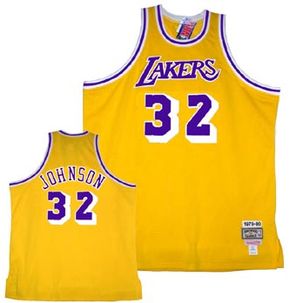The Clothes Make the Player
The uniforms and other gear worn by athletes are defined by the sport they play. In organized basketball, players on the same team wear matching jerseys and shorts, which make up a uniform. Traditionally, home teams wear light-colored jerseys that display their mascot name, while visiting teams wear dark-colored jerseys displaying the name of the city (NBA) or college.
Each uniform must display one or two digits on the front and back of the jersey. The numbers on a jersey are used to identify a player when calling violations. In most cases, the digits can only be 0, 1, 2, 3, 4 or 5. While the NBA has allowed players to use numerals higher than 5, it is a rare allowance. This limitation on numerals allows referees to use their hands to signal player numbers to the game's official scorekeeper. Otherwise, a player wearing number 9 could be confused with a player wearing number 54.
Advertisement
Uniforms have evolved greatly since the first game was played in 1891. In those early years, players wore long-sleeved, wool jerseys and long pants. It didn't take long for players and coaches to realize that long sleeves hindered arm motion when shooting the ball and that heavy uniforms caused fatigue among the players.
Shorts and sleeveless jerseys are now the accepted uniform worn by basketball players. For decades, players wore tight-fitting shirts and shorts. In the 1990s, players began to wear baggier uniforms, a style popularized by NBA icon Michael Jordan. NBA rules state that shorts cannot be longer than 1 inch (2.54 cm) above the knee. If you've seen a game recently, you know that many players do not observe this rule.
The other key piece of gear worn by basketball players is their shoes. In basketball, most players wear high-top athletic shoes. The high-tops give better support to players' ankles, which tend to get injured due to jumping and quick lateral moves.
